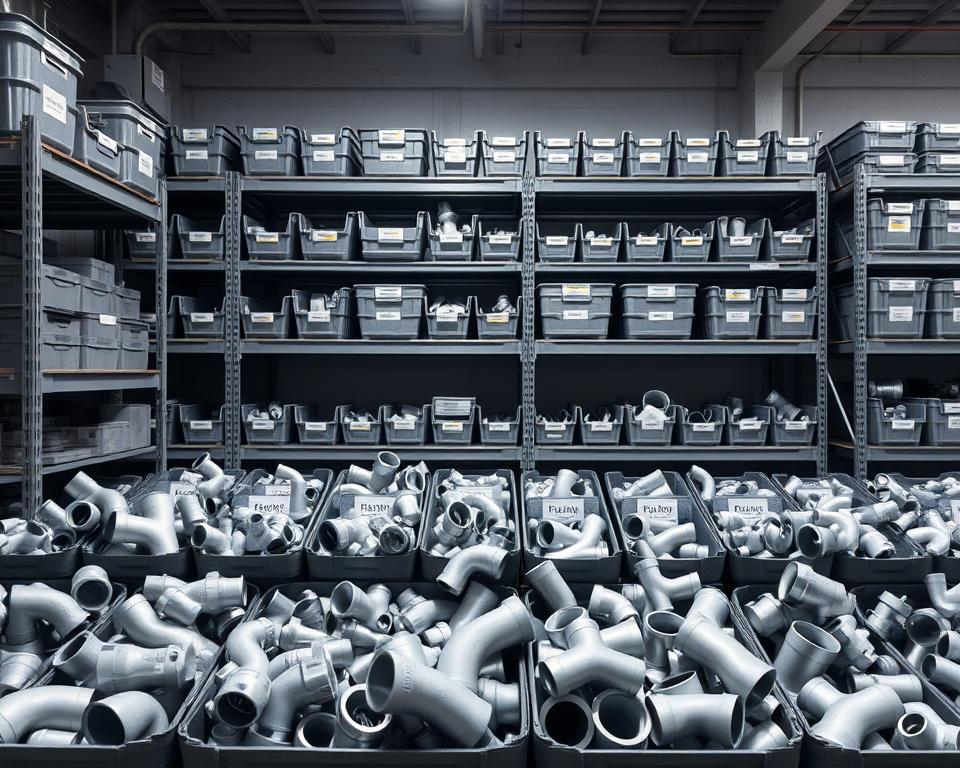FTTH Cable Manufacturing Line Solutions & Equipment
The global demand for fiber optic internet is set to surpass 50 billion-plus connections by the year 2025, signaling a significant shift in the communication industry. This surge underscores the crucial role of fiber-to-the-home cable manufacturing lines in the evolution of the industry. As innovations in technology propel optical fiber production ahead, producers are now able to producing superior FTTH cables. These fiber lines are engineered to support the growing demand for swift and dependable online connections. For enterprises, the selection of ideal production line equipment is paramount to keeping a leading position in this quickly evolving environment. The core of effective communication technology systems depends on the acquisition of superior FTTH fiber manufacturing systems.
Key Takeaways
- Fiber-to-the-home technology is essential for delivering high-speed internet to homes.
- Innovations in optical fiber production simplify assembly procedures.
- High-quality production line equipment affects overall performance.
- Meeting growing consumer demands is key for communication companies.
- Investing in FTTH production lines enhances return on investment.
Comprehending Fiber-to-the-Home Technology
FTTH technology, an initialism for Fiber To The Home, marks a state-of-the-art network architecture. It utilizes Sheathing line to provide high-speed internet and strong communication services straight to homes. This method varies significantly from traditional copper-based systems, providing notable benefits for today’s consumers.
What is FTTH?
FTTH entails the deployment of fiber optic cables from a main hub or network node straight to a residence. This configuration guarantees unparalleled bandwidth capacity, drastically improving system efficiency over legacy systems. Users benefit from faster download and upload speeds, stable links, and reduced latency. These improvements enable seamless streaming, gaming, and other bandwidth-heavy tasks.
The Significance of FTTH in Telecommunications
FTTH holds a crucial role in communications systems. It meets the escalating need for high-speed internet, crucial for both individual and corporate use in the digital era. Corporations rely on FTTH for their day-to-day functions, while households experience enhanced connectivity. This facilitates online education, remote work, and media consumption. Deploying FTTH technology improves user experiences and boosts economic development across various industries.
Key Elements of FTTH Fiber Manufacturing
The creation of FTTH cables necessitates a variety of key components, each holding a pivotal role in the cable’s durability and performance. These components are essential to selecting resources that ensure maximum performance and lifespan.
Overview of FTTH Cable Elements
FTTH cable components include:
-
Fiber optics: The core of the cable, created to send data in the form of light signals.
-
Protective sheathing: Provides insulation and shields the fiber core from external elements.
-
Reinforcement materials: Added to provide tensile strength, allowing the cable to withstand physical stresses during installation and use.
The precise amalgamation of these materials is essential for the cable’s effective performance across varied conditions.
Benefits of High-Quality Materials
Investing in high-quality materials profoundly impacts the production process of FTTH cables. High-grade elements result in:
- Increased longevity and lifespan of cables.
- Improved performance, leading to faster data flow.
- Lower repair expenses over time due to fewer failures or malfunctions.
By focusing on premium resources, manufacturers can elevate operational efficiency and maintain a market edge in the industry.
You said:
continue
ChatGPT said:
ChatGPT
FTTH Fiber Manufacturing Machinery
In the field of FTTH cable manufacturing, the choice of appropriate equipment is paramount for sustaining quality and production efficiency. Each element of the assembly line significantly impacts the end result, ensuring that cables comply with rigorous requirements.
Significance of Proper Equipment
Maximizing the use of FTTH cable manufacturing systems is crucial for achieving superior outcomes. Advanced equipment not only increases production efficiency but also minimizes downtime and running costs. Investing in dependable fiber manufacturing machinery allows producers to consistently generate top-tier FTTH cables that meet escalating requirements. The impact of proper equipment transcends manufacturing; it shapes the overarching achievement of the business.
Types of Machinery Used in Production
Several pivotal equipment categories are essential to the FTTH cable manufacturing cycle, each with a specific function:
-
Sheathing Systems: Vital for coating insulation to the optic core, guaranteeing its long-lasting performance and operational integrity.
-
Optical Fiber Stretchers: These systems are pivotal in elongating the fiber, offering accurate regulation over the thickness.
-
Fiber Braiding Equipment: Crucial for twisting several optical strands, stranding lines augment the cable’s durability and flexibility.
-
Optical Fiber Coders: These machines add color coding to optical strands, simplifying identification and deployment.
Each piece of fiber manufacturing machinery is vital in enhancing production efficiency and delivering superior outputs. By comprehending their roles, producers can make strategic decisions that improve manufacturing processes.
Features of a Comprehensive FTTH Cable Production Line
A comprehensive FTTH cable manufacturing system includes multiple key components. These elements greatly enhance the efficiency and standard of the end result. It is vital to understand the functions of the SZ stranding line, the optic fiber coder, and the fiber draw tower to optimize production processes.
Functions of the SZ Stranding Line
The fiber twisting system is vital for the accurate organization of fiber optics. It enables the coiling and bundling of fiber optic strands with precision. This process is essential for preserving data transmission quality. The SZ stranding line ensures consistent tension and alignment, preventing signal loss and mechanical stress.
Advantages of a Optical Fiber Coder
Integrating a optic fiber coder into the production line improves visual identification and accuracy in production. This machinery enables the application of distinct optical identifiers, facilitating fiber management during installation and maintenance easier. The clear distinction aids technicians in quickly identifying and handling various fiber strands, leading to a more streamlined workflow.
Functionality of the Optical Fiber Stretching Device in Manufacturing
The fiber draw tower is crucial for maintaining the accurate diameter of optic cables. It transforms heated silica into fine fibers with exact specifications. By following strict guidelines, the fiber draw tower enhances the reliability and efficiency of FTTH cables. It ensures they meet industry specifications, leading to better outcomes.
Innovations in FTTH Fiber Manufacturing
Innovative cable manufacturing has significantly advanced the development of fiber optic cables. The incorporation of intelligent systems and eco-friendly machinery has boosted manufacturing efficiency and environmental impact. These improvements not only streamline production but also cater to the increasing demand for high-quality communication systems.
Smart Technologies in Cable Manufacturing
Smart technologies have revolutionized the fiber production industry by implementing robotics and real-time monitoring. Through big data analysis and machine learning, producers can:
- Improve output through automation of routine procedures
- Minimize error rates with live quality checks
- Implement predictive maintenance, minimizing system failures and repairs
These technological improvements ensure manufacturers can efficiently create premium fiber optic cables, meeting the requirements of modern telecommunications.
Eco-Friendly Machinery for Fiber Production
The emphasis on sustainable equipment in FTTH cable manufacturing is paramount. Advanced machinery is engineered to use less energy and minimize waste. The advantages are:
- Lower operational costs, improving overall profitability
- Reduced carbon footprint, aligning with eco-friendly initiatives
- Improved efficiency and longevity of equipment, leading to reduced repair needs
By embracing eco-friendly machinery, Optic fiber cable equipment fiber producers contribute to environmental conservation and enhance their market standing in a swiftly evolving market.
Optimizing Production with Advanced Equipment
In the quest of heightened efficiency in FTTH cable production, the importance of advanced equipment is critical. Techniques from the optical fiber second-layer coating system and the outer covering process are pivotal in streamlining manufacturing. These approaches not only strengthen the resilience of the fiber but also streamline the manufacturing process significantly.
Fiber Secondary Coating Line Techniques
The optic fiber second-coat application is vital for adding a protective layer to fiber optics. This process is enhanced by several important methods:
-
Precision Application: Ensures consistent application, which enhances fiber protection.
-
Quality Control: Utilizes advanced testing systems to identify defects early in the manufacturing line.
-
Process Acceleration: Increases production rates without sacrificing performance, allowing for higher volumes.
By adopting these strategies, manufacturers can significantly enhance the performance of their fiber cables while guaranteeing cost-effectiveness.
Benefits of Using Sheathing Lines
Adding a sheathing line into the production workflow offers various advantages that improve the durability and robustness of the finished cables. Key advantages include:
-
Improved Safeguarding: The sheathing process shields the fiber from environmental factors and mechanical strains.
-
Easier Installation: Cables are easier to handle and install due to the added flexibility and durability from sheathing.
-
Tailored Solutions: Manufacturers can customize the outer covering features to suit specific project needs and standards.
Adopting a outer coating process in manufacturing workflows fortifies the overall quality of FTTH cables, guaranteeing they comply with the challenges of real-world applications. The integration of advanced equipment in the fiber secondary coating line and sheathing line creates a cornerstone for production optimization. This results in high-performance fiber cables for communication networks.
Challenges in FTTH Fiber Production
FTTH manufacturing encounters significant challenges that can affect both output levels and fiber standards. Communication companies experience several manufacturing difficulties, which can hinder their operations. Recognizing these issues is pivotal in crafting efficient manufacturing strategies aimed at enhancing output and reliability.
Common Production Issues
A number of key manufacturing problems arise during the FTTH cable manufacturing process:
-
Machinery breakdowns: Unexpected equipment breakdowns can stop manufacturing processes, leading to setbacks and increased expenses.
-
Material quality issues: Subpar resources can weaken cable integrity, leading to high product rejection and customer dissatisfaction.
-
Manufacturing slowdowns: Suboptimal processes can slow down the manufacturing process, limiting production rates.
Solutions for Tackling Issues
Effective strategies are essential for overcoming FTTH production obstacles:
-
Regular upkeep schedules: Frequent equipment inspections and maintenance can forestall unexpected failures and prolong equipment lifespan.
-
Providing worker education: Comprehensive training makes certain workers are skilled in operating machinery and solving problems.
-
Utilizing smart tools: Adopting automated systems can streamline processes, reduce material loss, and enhance overall production speed.
Financial Planning for FTTH Manufacturing
Setting up a successful fiber secondary coating line requires careful budgeting. It’s crucial to identify cost-effective strategies that enhance productivity without compromising quality. Delving into FTTH investment opportunities and their financial rewards is key to improving ROI.
Cost-Effective Solutions for Your Production Line
When constructing an FTTH production line, focus on cost-effective production methods to cut costs without compromising quality. Essential strategies are:
- Investing in multi-functional machinery that reduces the need on several separate devices.
- Sourcing from local suppliers for raw materials to lower transportation costs.
- Implementing process automation to boost productivity and reduce labor costs.
Evaluating ROI for Fiber Manufacturing Machinery
The equipment ROI is paramount in assessing the worth of your FTTH investments. Calculating ROI helps determine the economic impact of buying new equipment. Consider these elements when assessing prospective equipment:
- Initial purchase cost against ongoing reductions from enhanced productivity.
- Estimated lifespan and repair expenses of the machinery.
- The potential revenue increase from enhanced production capabilities.
By concentrating on these elements, producers can reach smart conclusions that yield substantial advantages in their FTTH cable production ventures.
Final Thoughts
The examination of FTTH cable manufacturing has highlighted the pivotal elements, tools, and advancements crucial for modern telecommunications solutions. As the demand for swifter internet access escalates, the acquisition of suitable machinery and innovations is critical for manufacturers intent on increasing their production.
Streamlining manufacturing processes not only improves operations but also enhances the overall network infrastructure. By embracing advanced manufacturing techniques and high-quality components, organizations can fulfill the dynamic consumer demands within the communication industry.
The emphasis on refining FTTH cable production will have a cascading effect, resulting in better internet access and service dependability. As businesses navigate the digital era, the investment in avant-garde equipment not only promotes expansion but also creates a strong foundation for forthcoming telecommunications progress.



